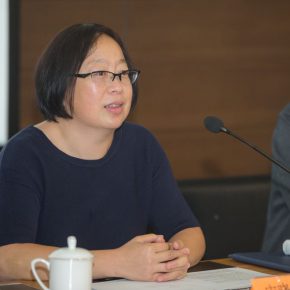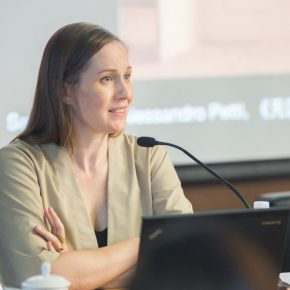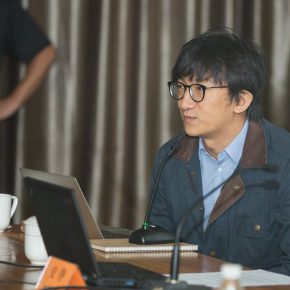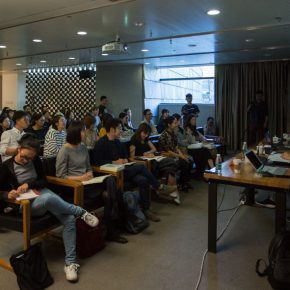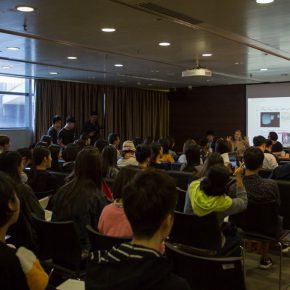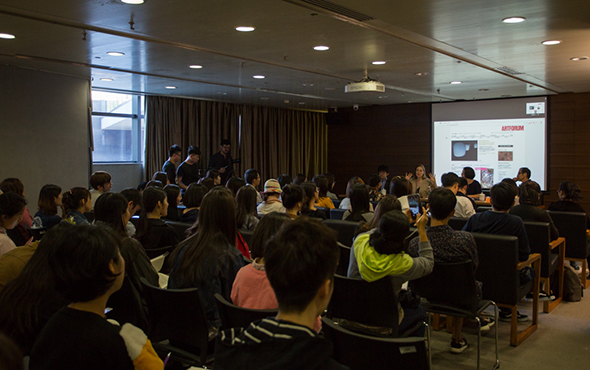
It is difficult to find the origin of art criticism within documents focusing on the perspective of the clue of history, but we believe that art criticism and art happened simultaneously from the perspective of an inference, when the work called “art” was born, this is either evaluated with a professional term, or “remade from the appearance” by the public. Although we do not have a “textological” analysis of this subject, we need to admit that art criticism has played an important role in the developmental process of modern art towards contemporary art.
In the 1960s, it was the era of contemporary Western art, and the writers of art criticism were not ordinary writers in the field of art and culture, but the interpreters of the art scene, the leaders of the artistic trends, and even the judges of the art world. After the end of World War II, the rise of American abstract expressionism soon formed the cohesion in the Western art world, and New York which also replaced Paris as the new center of art, where the Art Forum appeared as the important publication of American art criticism. Although much commercial information from art galleries were published, it did not affect the independent attitude of art criticism and many issued articles aroused heated discussions at that time, became a textbook and entered the educational system of colleges.
Recently, “Inside and Outside White Cube: 50 Years of Contemporary Art Criticism” was published by the Sanlian Bookstore in China, selecting 29 articles, constituting ideological highlights of the “Art Forum" in the past 50 years (1963 - 2003). It is the first time to present this influential art magazine in China, and it is also a supplement and extension of “Art Forum” Chinese website. As the editor in chief Ambrozy Lee writes in the preface that it is a complex summary of an anthology and reference book, which is not only an historical documentary, but also a brief history of contemporary art, art criticism and theories in Europe and the United States in the second half of the twentieth century. On September 28, 2017, an academic discussion on the “Inside and Outside Contemporary Art” was held in the Central Academy of Fine Arts, where Prof. Song Xiaoxia from the Central Academy of Fine Arts, Ambrozy Lee, Editor in Chief of “Inside and Outside White Cube”, Wang Chunchen, Deputy Director of CAFA Art Museum, and Yang Beichen, a senior editor of the “Art Forum” Chinese website had a discussion on the topics such as language, writing and translation, as well as the methods and status quo of contemporary art criticism, trying to rethink the multiple dimensions of “art criticism”.
“Art Forum” magazine can be regarded as the glory of art criticism on the modern development to contemporary art, but some new situation was quietly happening over the last two decades. Along with the market and the art exhibitions flourishing, curators began to replace the critics and became the essential figures of the contemporary art scene, although there is a certain coincidence in the composition of identity. In addition, contemporary art happened which was parallel to the rise of visual culture, while the image and “viewing” became the core of culture, and the writing was inevitably declined, the popularity of the network was also intensifying the reader’s independent self-interpretation of culture and art to some extent, and some people discussed whether art criticism was dead or not.
Along with the arrival of the visual age, there has been a subtle change in the style of writing and reading, embodied in the indifference with the style of criticism, as well as the favorable essence of narrative writing. The anti-authority and anti-centrism nature of contemporary art naturally has a collision with the criticism that manufactures authority, but it also stimulates some new possibilities in the context of global visual culture. For contemporary art in China, as the product of the globalization of contemporary art, the strong ideological realism has been replaced by the exploration of contemporary issues, and the Western art critic plays an irreplaceable role as a bridge. China’s local art criticism has also developed to be a complex selection of journals, papers, magazines, networks, forums, self-media, which gives birth to a large number of writers and texts. It is popular to write a preface for an exhibition as a form of criticism, which is also denounced. Statistics reveal that more than 3780 contemporary art exhibitions opened in China in 2016, but it is difficult for this grand occasion to cover the common problem of this style that misses an independent attitude, and full of artificial words. But the philosopher Wang Min’an still believes that the art criticism now replaces the literary criticism applied thirty years ago and constitutes a vibrant field of writing. To discuss contemporary art criticism from the global perspective, “Art Forum” also faces the problem of “interpretation” and understanding when it arrives in China in the form of a book in Chinese. “Art Forum” in Chinese is is an historical perception and cultural scene, which is also the portrayal of the “inside and outside” of contemporary art itself. In the history of the construction of Chinese culture, it appeared that many prosperous periods of translation, for example, the involvement of Buddhism, and the previous translation is a mirror to reflect the acceptance of modernity for contemporary art, and it is the process of re-creating the self, completing the self-confirmation at present.
This book is called “Inside and Outside White Cube”, on the one hand, it prompts contemporary art criticism as not only an “internal” phenomenon, but also related to many cultural dimensions; and the publication of the Chinese version which implies that the “inside” and “outside” are not important in the contemporary context any more, and we need to tear down the partition between the inside and outside, to digest the boundaries in the context of globalization, to inspect what is happening from a comprehensive perspective.
This book was edited in a chronological order, in order to help the reader to have a clear understanding of the discussed focus and academic attention of the different periods, and to see the developmental clues of the same theory and view in different periods, as well as the styles and features of the criticism of contemporary art in different periods. Browsing the catalogue, we clearly see discussions on a variety of artistic styles and genres in the 1960s, for example, pop art, occasional art, conceptual art, earth art; and art criticism then began to go beyond the art itself, so that, the social politics, economy, as well as other topics in the field of humanities and visual culture were involved. The issues of inside and outside white cube, as well as the boundaries, are becoming less and less limited in the field of contemporary art criticism, but are placed in the state of gradually expanding, blurring and blending. In terms of the style of writing, a lot of the writing which is different from traditional art criticism, gradually debuting, for example, Thomas McEvilley’s narrative and the descriptive “Doctor Lawyer Indian Chief”, and Baudrillard’s “Starry America” which is the perception of travel, using a poetic text to express his profound analysis and interpretation of a “super real America”. Some people thought that “Art Forum” slipped to satisfying the public interest. Of course, it actually responded to the digestion of the geographical and cultural boundaries of contemporary art creation and criticism in the era of globalization, as the subject of the last article in this book: “Boundary Issues: the Art World under the Symbol of Globalism”. Contemporary art can be direct and emotional, and it can also be euphemistic, unspeakable, so that contemporary art needs to be constantly explained and criticized.
Arthur Coleman Danto has said: “The world of art and the real world are the same”, the world of art must change with the times, and contemporary art criticism as part of the world of art must also keep up with the concept and language of the changing real world.
Text by Zhang Wenzhi, Photo by Hu Sichen/CAFA ART INFO
Translated by Chen Peihua and edited by Sue/CAFA ART INFO


